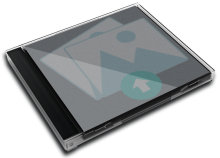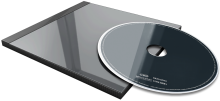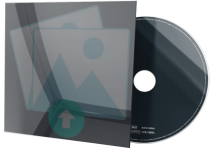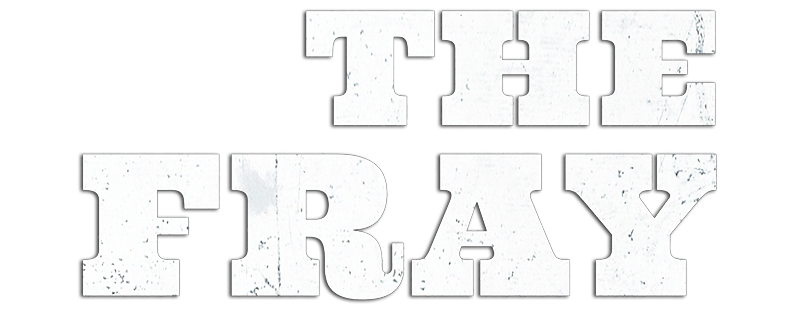
Cover NOT yet available in
Join up for 4K upload/download access
Your Rating (Click a star below)
![]()
![]()
![]()
![]()
![]()
![]()
![]()
![]()
![]()
![]()
Track List
01) She Is
02) Over My Head (Cable Car)

03) How to Save a Life

04) All at Once
05) Fall Away
06) Heaven Forbid
07) Look After You

08) Hundred
09) Vienna
10) Dead Wrong
11) Little House
12) Trust Me
13) Unsaid
01) She Is
02) Over My Head (Cable Car)
03) How to Save a Life
04) All at Once
05) Fall Away
06) Heaven Forbid
07) Look After You
08) Hundred
09) Vienna
10) Dead Wrong
11) Little House
12) Trust Me
13) Unsaid
3:58
3:58
4:23
3:48
4:23
4:01
4:28
4:14
3:51
3:06
2:31
3:22
3:04
Data Complete 80%
Total Rating
Total Rating
![]() (0 users)
(0 users)
Back Cover![]()
CD Art
3D Case
3D Thumb
3D Flat
3D Face
3D Spine
First Released
![]() 2005
2005
![]() Alternative Rock
Alternative Rock
![]() Reflective
Reflective
![]() Rock/Pop
Rock/Pop
![]() ---
---
![]() Medium
Medium
![]() Album
Album
![]() 0 copies
0 copies
Album Description
Available in:

How to Save a Life est le premier album studio du groupe américain de rock The Fray, publié le 28 mai 2005.
Emmené par le single « Over My Head (Cable Car) », ce premier opus dévoile le talent du groupe pour des chansons accrocheuses et sentimentales, mais musclées au niveau rythmique et mélodique. En 2006, l'album rentre dans le Top 40 des meilleures ventes d'albums aux États-Unis, notamment grâce à l'utilisation du single « How to Save a Life » pour la campagne publicitaire de la nouvelle saison de la série blockbuster Grey's Anatomy.
Le succès de ce titre est international. Il caracole partout dans le monde dans le top 10 des charts. The Fray se fait un nom. Aux États-Unis, l'album est certifié triple platine, et les ventes digitales sur Internet placent le groupe en tête des artistes les plus vendeurs en matière d'album dématérialisé.

User Album Review
Having secured a monster radio hit with How To Save A Life and seen its parent album become the biggest download seller ever, The Fray return with a second that resolutely avoids messing with the recipe. A stew of angsty earnestness, piano melancholy and anthemic melodies, like a Coldplay who have never heard Kraftwerk, The Fray will either move or bore you to tears, depending on your disposition.
Although cynics will no doubt accuse The Fray of commercial opportunism, there's little on the album to make you question the band's sincerity. Like their debut, The Fray tackles big questions – the struggles of everyday life, family dysfunction, the existence of God – and wraps them in a big sound, all pounding pianos, swollen guitars and Isaac Slade's hoarse, cracked falsetto.
Sometimes the songs generate the emotional weight The Fray clearly hope for. The single You Found Me packs a punch, thanks to its hauntingly simple piano hook and surging, impassioned chorus, as well as lyrics which see Slade challenge God for his apparent indifference. And both the harmony-borne Absolute and bruising We Build Then We Break slowly work their way under your skin, like Chris Martin at his most introspective.
Unfortunately, there are more moments where this uniformity of approach becomes drearily samey, and the songs blur into each other. When they're coupled with hackneyed lyrics – as on Happiness, which insists, ''happiness feels a lot like sorrow, let it be'' – the results are neither inspired nor inspiring. However, when the band does strike out in new directions, such as on the shuffling, fragile Ungodly Hour, they win your attention again.
There are enough haunting hooks and delicately well written tunes here to ensure The Fray hang on to their fervent fanbase, but little to win over newcomers. If they're to defy the law of diminishing returns, they'll need some fresh air blowing through their third.
External Album Reviews
None...
User Comments


Available in:
How to Save a Life est le premier album studio du groupe américain de rock The Fray, publié le 28 mai 2005.
Emmené par le single « Over My Head (Cable Car) », ce premier opus dévoile le talent du groupe pour des chansons accrocheuses et sentimentales, mais musclées au niveau rythmique et mélodique. En 2006, l'album rentre dans le Top 40 des meilleures ventes d'albums aux États-Unis, notamment grâce à l'utilisation du single « How to Save a Life » pour la campagne publicitaire de la nouvelle saison de la série blockbuster Grey's Anatomy.
Le succès de ce titre est international. Il caracole partout dans le monde dans le top 10 des charts. The Fray se fait un nom. Aux États-Unis, l'album est certifié triple platine, et les ventes digitales sur Internet placent le groupe en tête des artistes les plus vendeurs en matière d'album dématérialisé.
User Album Review
Having secured a monster radio hit with How To Save A Life and seen its parent album become the biggest download seller ever, The Fray return with a second that resolutely avoids messing with the recipe. A stew of angsty earnestness, piano melancholy and anthemic melodies, like a Coldplay who have never heard Kraftwerk, The Fray will either move or bore you to tears, depending on your disposition.
Although cynics will no doubt accuse The Fray of commercial opportunism, there's little on the album to make you question the band's sincerity. Like their debut, The Fray tackles big questions – the struggles of everyday life, family dysfunction, the existence of God – and wraps them in a big sound, all pounding pianos, swollen guitars and Isaac Slade's hoarse, cracked falsetto.
Sometimes the songs generate the emotional weight The Fray clearly hope for. The single You Found Me packs a punch, thanks to its hauntingly simple piano hook and surging, impassioned chorus, as well as lyrics which see Slade challenge God for his apparent indifference. And both the harmony-borne Absolute and bruising We Build Then We Break slowly work their way under your skin, like Chris Martin at his most introspective.
Unfortunately, there are more moments where this uniformity of approach becomes drearily samey, and the songs blur into each other. When they're coupled with hackneyed lyrics – as on Happiness, which insists, ''happiness feels a lot like sorrow, let it be'' – the results are neither inspired nor inspiring. However, when the band does strike out in new directions, such as on the shuffling, fragile Ungodly Hour, they win your attention again.
There are enough haunting hooks and delicately well written tunes here to ensure The Fray hang on to their fervent fanbase, but little to win over newcomers. If they're to defy the law of diminishing returns, they'll need some fresh air blowing through their third.
External Album Reviews
None...
User Comments

No comments yet...

